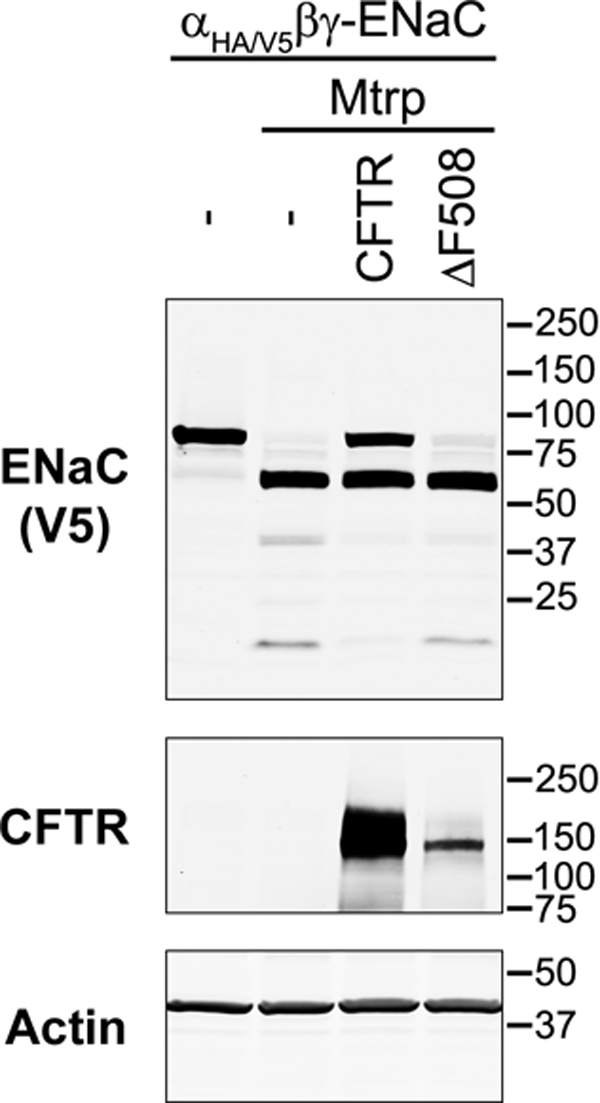♦ See referenced article, J. Biol. Chem. 2010, 285, 32227–32232
Cystic fibrosis (CF) is caused by mutations in the cystic fibrosis transmembrane conductance regulator (CFTR) that prevent its proper folding and trafficking to the cell membrane; this produces defects in chloride secretion, which results in CF phenotypes such as poorly hydrated airway surfaces and difficulty breathing. In addition to defective Cl− export, CF airway cells also undergo excessive Na+ absorption, which exacerbates these conditions. However, the molecular link between missing CFTR and increased Na+ absorption has remained elusive; evidence implicates hyperactivity of the epithelial Na+ channel (ENaC), although some suggest that such findings are merely electrophysiological or expression-related artifacts. In this Paper of the Week, Martina Gentzsch and colleagues confirm that ENaC and CFTR physically interact in Xenopus oocytes and also show that wild-type CFTR protects ENaC from proteolytic cleavage and stimulation of open probability; in contrast, the most common CF mutant ΔF508 failed to protect ENaC from proteolytic cleavage and stimulation. Gentzsch and colleagues followed up these observations with studies in human airway epithelia, finding that ENaC associates with the anti-CFTR immunoprecipitate in healthy cells, whereas in CF cultures the proportion of full-length ENaC protein was consistently reduced. This study provides solid evidence for a potential mechanism for CFTR-dependent down-regulation of Na+ absorption, which may help resolve the outstanding debate.

Wild-type, but not ΔF508 CFTR, inhibits the proteolysis of ENaC by matriptase as shown by Western blotting.
Supplementary Material
Associated Data
This section collects any data citations, data availability statements, or supplementary materials included in this article.


